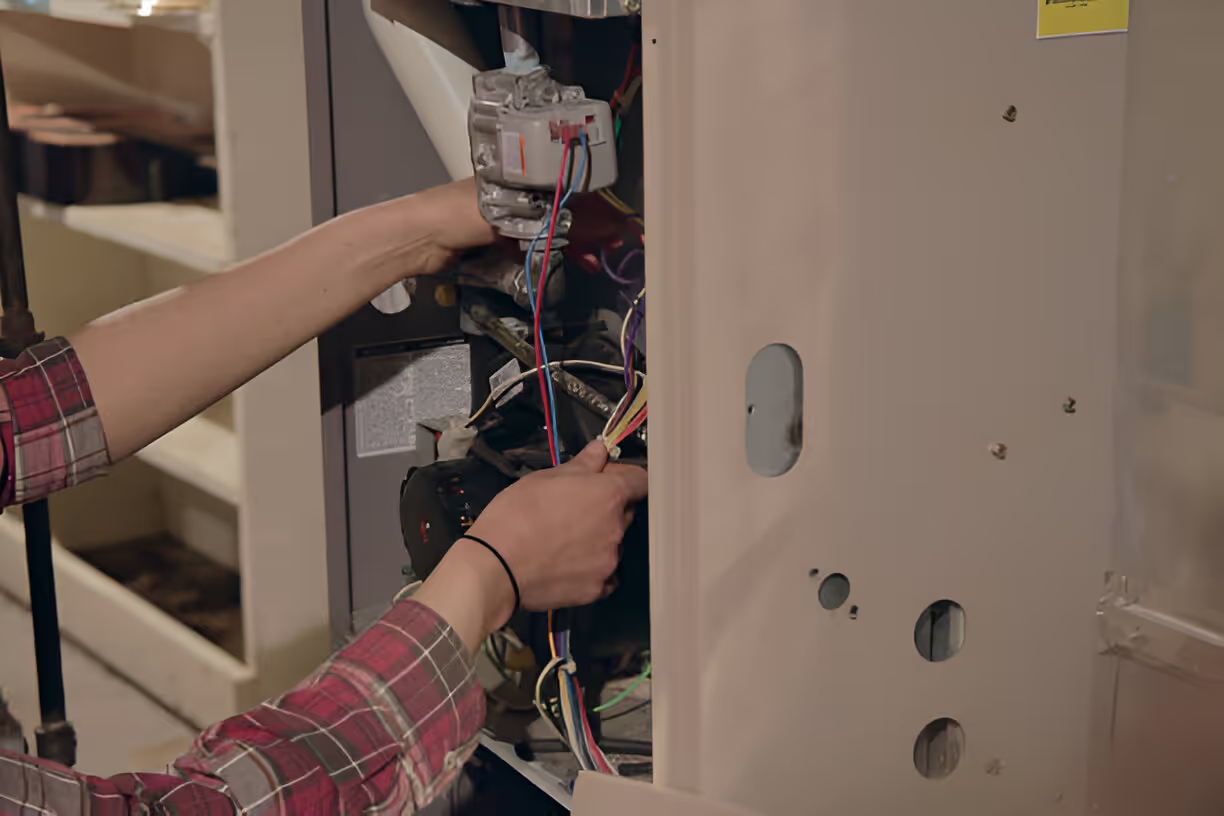Furnace Maintenance in Santan Valley, AZ
Keeping your furnace tuned and safe is a smart investment for Santan Valley homes. Although the desert climate means long, hot summers, winter nights can dip low enough that a reliable furnace is essential for comfort. Dust, monsoon season debris, and wide daily temperature swings all increase wear on heating equipment here. Regular furnace maintenance in Santan Valley, AZ reduces breakdown risk when you need heat most, improves efficiency, and helps protect your family from safety hazards like carbon monoxide leaks.

Common furnace issues in Santan Valley homes
- Dirty air filters and clogged return vents from desert dust and seasonal pollen, causing reduced airflow and overheating.
- Ignition and pilot failures after long idle periods or from dust buildup.
- Burners and heat exchangers soiled or corroded by dust and moisture after monsoon season, increasing the risk of inefficient combustion or cracks.
- Blower motor wear or belt slippage from heavy use during occasional cold spells and prolonged system cycling.
- Venting and flue blockages from debris or animal nesting, which can create dangerous exhaust problems.
- Inconsistent thermostat calibration or duct leaks that produce uneven heating and wasted energy.
What a typical furnace maintenance visit includes
A professional furnace tune-up follows a checklist designed to find problems early and restore peak performance. Typical tasks include:
- System safety inspection: Visual check of the heat exchanger for cracks, verification of proper venting and flue condition, and carbon monoxide monitoring to confirm safe combustion.
- Cleaning and combustion checks: Clean burners, inspect the ignition system or pilot assembly, and test combustion efficiency to ensure proper fuel-to-air ratio.
- Airflow and filter service: Replace or recommend the correct air filter, clean return and supply registers as needed, and measure airflow to avoid overheating and uneven heating.
- Blower and motor maintenance: Inspect and clean the blower assembly, lubricate motor bearings if applicable, and check belt tension to maintain smooth operation.
- Electrical and control checks: Tighten and inspect electrical connections, test safety switches and limit controls, and verify thermostat settings for accurate temperature control.
- Gas pressure and leak inspection: Confirm proper gas pressure and look for any signs of leaks at fittings and valves.
- Condensate and drain verification: For high-efficiency furnaces, inspect condensate traps and drains to prevent clogs that can cause system faults.
- Ductwork assessment: Visual inspection for obvious leaks, disconnected sections, or insulation problems that reduce efficiency.
- Detailed report and recommendations: Technicians document the condition of key components, note any safety concerns, and provide prioritized repair or replacement options.
Most maintenance visits take about 45 to 90 minutes depending on system complexity and findings.
How regular maintenance extends equipment life and improves efficiency
- Improved combustion and heat transfer: Clean burners and properly maintained heat exchangers allow the furnace to transfer more heat from the same amount of fuel, raising efficiency and lowering energy use.
- Reduced stress on components: Clean filters and balanced airflow prevent the blower motor and heat exchanger from working harder than necessary, decreasing premature wear.
- Fewer emergency repairs: Small issues detected early—like a worn belt, loose electrical connection, or minor gas pressure variation—are easier and less costly to fix than sudden failures in cold weather.
- Safety assurance: Regular inspections reduce the risk of dangerous problems such as cracked heat exchangers or venting failures that can cause carbon monoxide infiltration.
- Warranty and resale protection: Following manufacturer service recommendations by having annual maintenance performed can help preserve warranty coverage and supports better home inspection outcomes if you sell your house.
In Santan Valley, the combination of dust and occasionally high humidity during monsoon months accelerates component soiling and corrosion, making seasonal maintenance particularly valuable.
Membership and seasonal plan benefits
Seasonal plans and maintenance memberships are designed to reduce surprises and spread needed maintenance into manageable service intervals. Typical benefits include:
- Priority scheduling during cold snaps so members get faster response when demand spikes.
- Regular reminder scheduling timed for optimal maintenance windows (late summer or early fall for pre-winter service; spring checks if you want biannual attention).
- Planned biannual or annual inspections to address the dust-heavy environment in Santan Valley—consider biannual service if your home is especially dusty or close to construction.
- Discounts on repairs and replacement parts associated with documented maintenance, often lowering the cost of unplanned fixes.
- Detailed service records that help track equipment performance and support warranty claims.
- Preventive replacement guidance based on documented wear patterns, enabling more predictable budget planning.
Scheduling information and what to expect
- Best timing: Schedule furnace maintenance in Santan Valley in late summer or early fall (September–November) to prepare the system before the first cold nights. If your home collects more dust or you experienced issues last winter, consider a spring check as well.
- Frequency: For most homes, an annual furnace tune-up is recommended. Homes with heavy dust exposure, pets, or older equipment can benefit from biannual service.
- Technician arrival: Expect a uniformed, certified technician to follow a standard checklist, complete safety tests, and leave a written summary of findings and recommendations. Work areas should be protected and cleaned before the technician departs.
- Duration and documentation: Plan for a 45–90 minute appointment. You will receive a maintenance report noting inspected items, any safety concerns, and suggested repairs prioritized by urgency.
Long-term value and peace of mind
Routine furnace maintenance in Santan Valley, AZ keeps systems safer, more efficient, and more reliable. For homeowners accustomed to long cooling seasons and sudden colder nights, a professionally maintained furnace ensures predictable warmth when you need it and helps avoid expensive emergency repairs. Regular service also delivers measurable energy and comfort benefits so your heating system operates as intended throughout the year.






